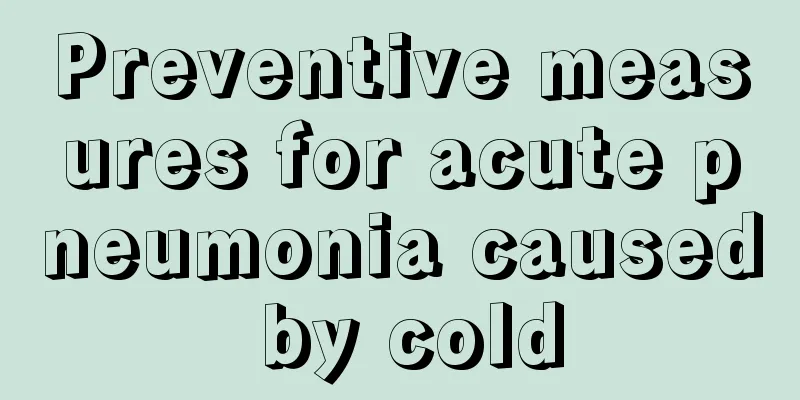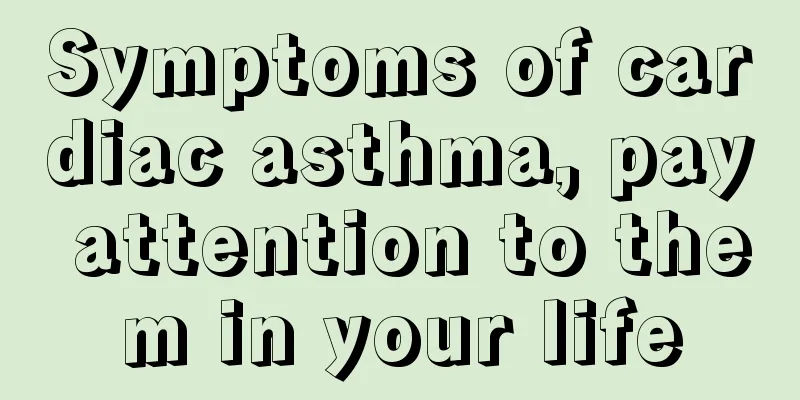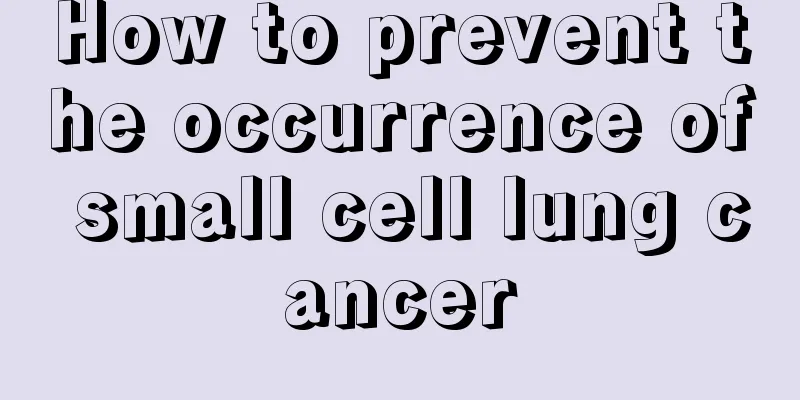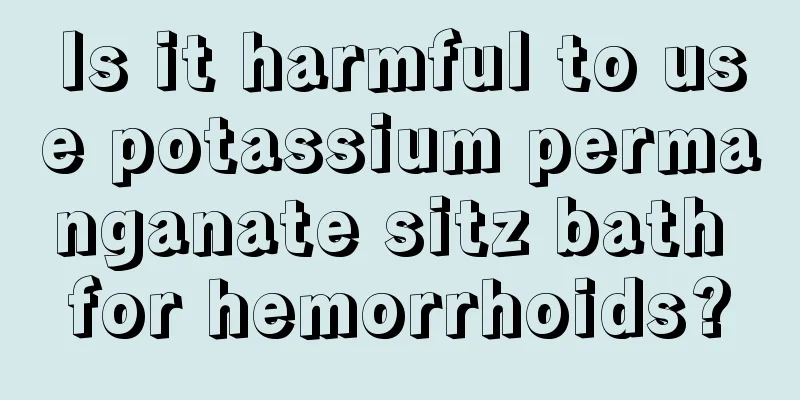Preventive measures for acute pneumonia caused by cold

|
Almost everyone will catch a cold, and severe colds often cause acute pneumonia. If patients with acute pneumonia are not treated in time, it is easy to lead to death. Therefore, patients with acute pneumonia caused by colds must do a good job of prevention. So, what are the preventive measures for acute pneumonia caused by colds? Let’s take a brief look at it! General care and supportive therapy The room temperature should be maintained at around 20°C and the relative humidity should be 55-65% to prevent respiratory secretions from drying out and becoming difficult to cough up. In winter, you should open windows regularly for ventilation, 30 minutes each time, 3 times a day, avoid convection wind, pay attention to rest, implement strict respiratory isolation system, and prevent cross infection. Closely observe changes in the condition and provide appropriate treatment in a timely manner. For children with a bluish-gray complexion, cyanosis around the mouth, irritability or drowsiness, attention should be paid to changes in heart sounds and heart rate, and observation should be made for the occurrence of myocarditis. If the cyanosis worsens after feeding or crying, and is not relieved after oxygen inhalation, the cause should be identified and treated in a timely manner. Pay attention to nutrition and water supply; breastfeeding should be done as much as possible. If bottle-feeding is required, the amount and concentration of milk can be determined according to the baby's digestive function and condition. If the baby has diarrhea, skimmed milk should be given. For infants or children, a light, easily digestible diet rich in multiple vitamins should be provided. Children in the recovery period should be given nutritious, high-calorie food. For critically ill children who cannot eat, intravenous infusion should be given to supplement calories and water. The daily fluid volume should be 60-80ml/kg. Whole blood or plasma can be transfused if necessary. People who also suffer from rickets should be treated with vitamin D3 injections. To keep the airway open, nasal crusts, nasal secretions and respiratory sputum should be removed promptly. Improve ventilation function, increase alveolar ventilation, correct hypoxia, and reduce CO2 retention. For those with a lot of thin phlegm, you can turn over and pat your back repeatedly to help the phlegm be discharged. You can also take the expectorant ammonium chloride mixture orally: 1 ml/year, 3 times a day. For those with thick sputum that is difficult to cough up, suction or ultrasonic atomization can be used for inhalation. The liquid formula is 30 ml of normal saline or distilled water, 20,000 U of gentamicin, 5 mg of a-chymotrypsin, and 1 mg of dexamethasone. Each inhalation is for 10-15 minutes, 2-3 times a day. The above are some preventive measures for acute pneumonia caused by colds. These preventive measures are very effective, especially for children who are most prone to acute pneumonia. Parents must understand the treatment measures for acute pneumonia so that children can receive timely treatment when they develop acute pneumonia. |
<<: Is pneumonia with fever serious?
>>: What should I do if my butt hurts after falling
Recommend
What to do if pregnant women have fever, cold or flu
Heat cold is a summer cold. If you don't take...
What symptoms will patients with advanced lung cancer have? Five symptoms of advanced lung cancer are very common
Extrapulmonary and intrathoracic manifestations: ...
What kind of tea is good for treating swelling and inflammation
In people's daily lives, the treatment of dis...
How to treat a child’s cough with yellow phlegm?
Catching a cold is a very normal phenomenon. It c...
How often should activated carbon be replaced
I believe that activated carbon is familiar to ma...
What causes itchy eyes?
If the area around the eyes is itchy, you should ...
How to use nitroglycerin
Nitroglycerin is a yellow liquid and a chemical. ...
What to do if your face is oily and acne-prone
Everyone's skin is different. Some people hav...
What color is the blood in the stool caused by rectal cancer? What are the abnormal symptoms of bowel movements caused by rectal cancer
The most obvious symptom of rectal cancer is blee...
What are the symptoms of gastric reflux
As the saying goes, nine out of ten people suffer...
How to perform breast cancer surgery
Breast cancer surgery is performed according to n...
What are the benefits of eating chestnuts? 6 rare benefits
Chestnut is a common food with extremely high nut...
Treatment methods for otitis media, what patients should know
Otitis media and mastoiditis are ear diseases tha...
Wash your face when you have a cold
When viruses invade the human body, people with p...
What to do if your hands are numb? Check and find the cause in time
Healthy people may also experience numbness in th...









